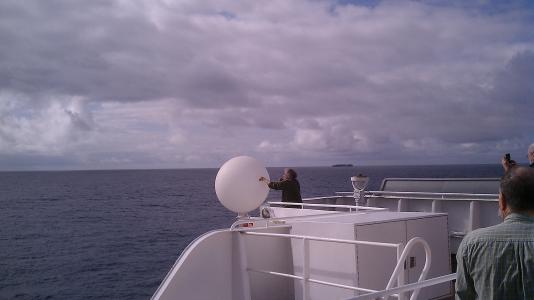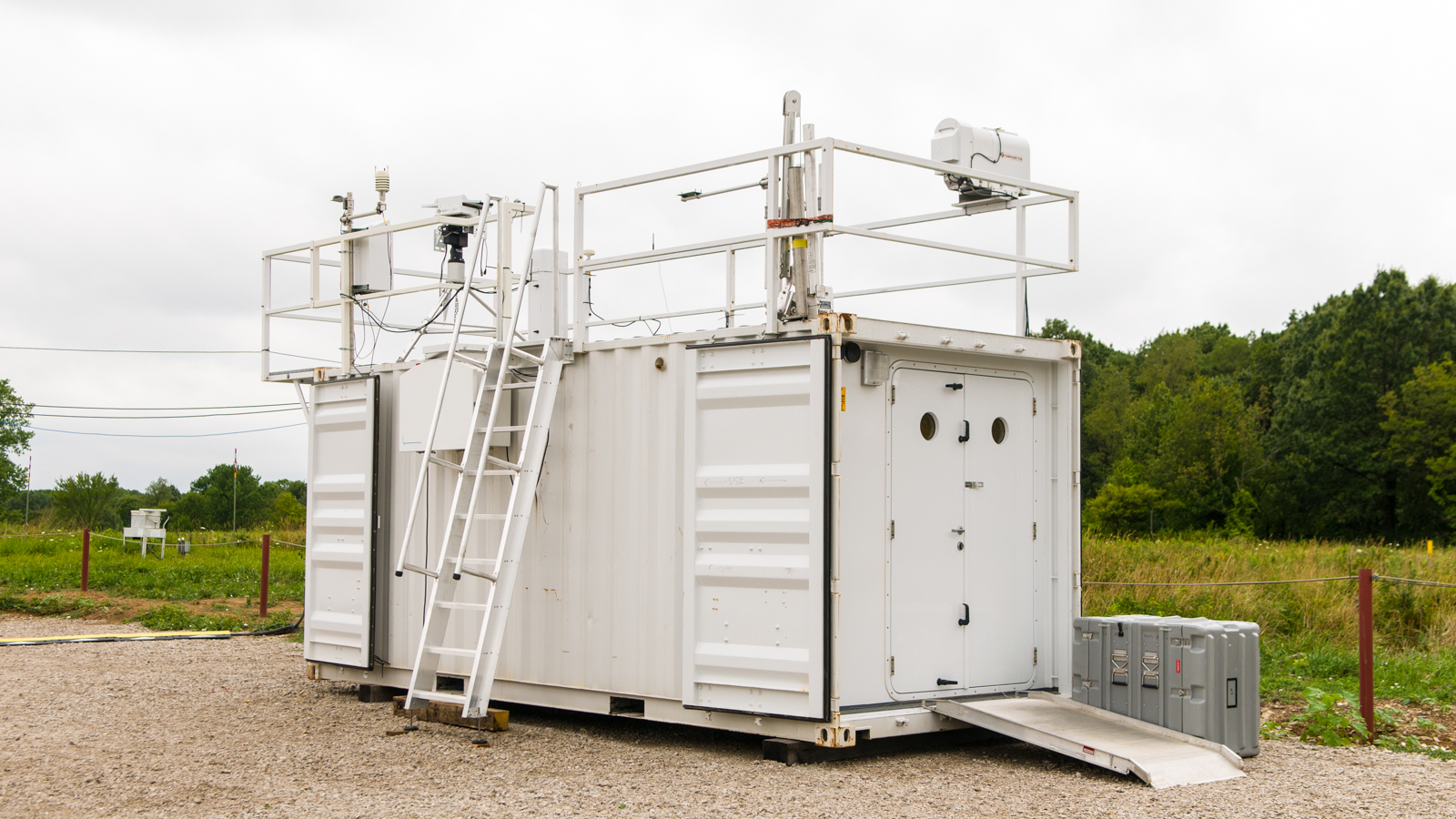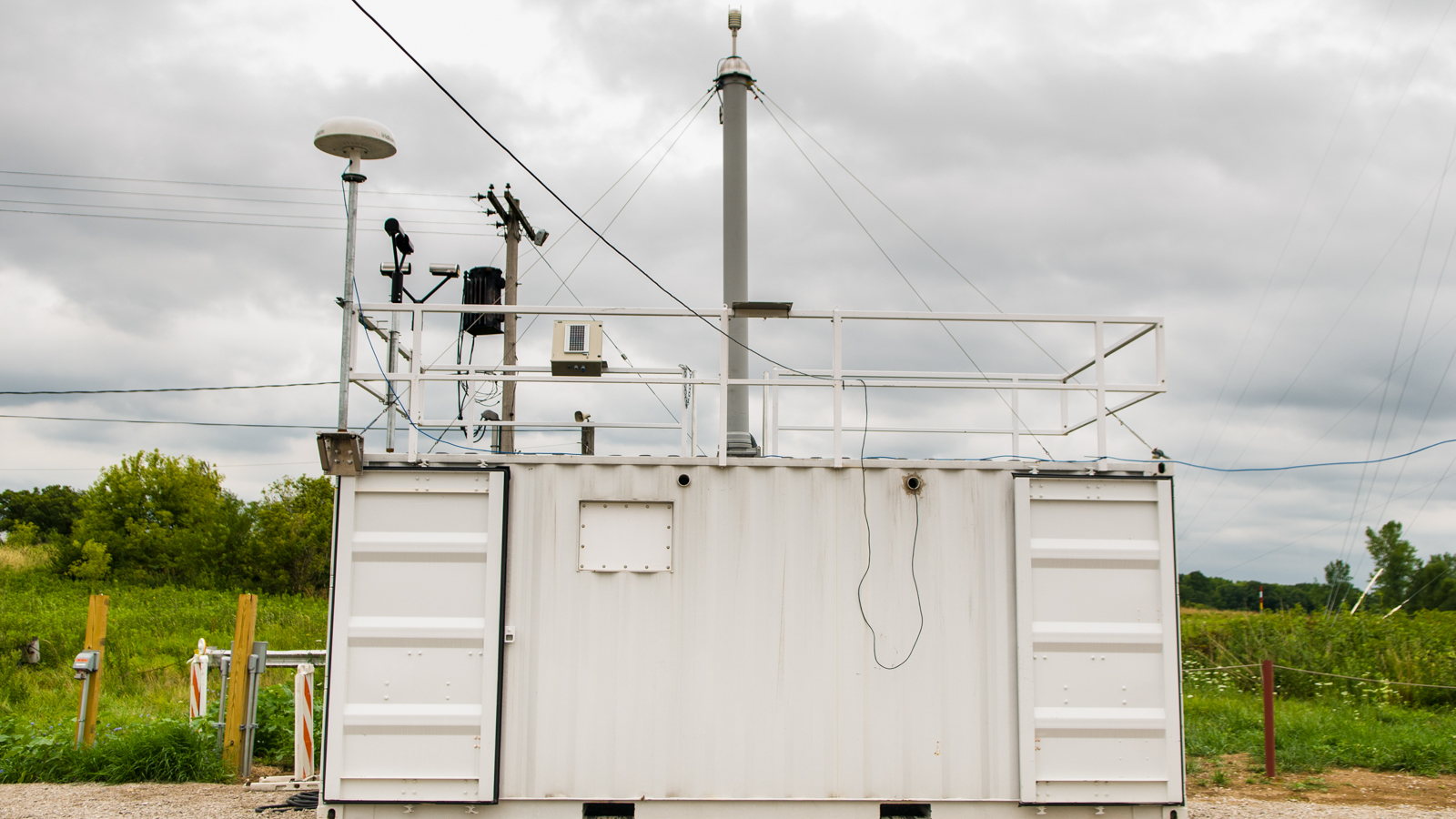
Following a six-month land-based campaign in the Maldives to study tropical convective clouds, the Department of Energy’s (DOE) second Atmospheric Radiation Measurement (ARM) mobile facility, called AMF2, is being readied for its first marine-based research campaign aboard a cargo container ship in the Pacific Ocean.
The facility, operated and maintained by Argonne National Laboratory’s Environmental Science division, is a mobile suite of atmospheric sensing instruments to measure properties of clouds, precipitation, aerosols and radiation in regions where observational data is sparse or existing data is difficult to resolve in global climate models.
This October, the AMF2 will be deployed on the Horizon Lines ship Spirit, which will traverse its scheduled shipping route between Los Angeles and Honolulu approximately 25 times over the course of the yearlong field campaign. The campaign is called MAGIC for the Marine ARM GPCI Investigation of Clouds; GPCI is a project comparing data from the major climate models. Atmospheric scientist Ernie Lewis of Brookhaven National Laboratory leads the MAGIC campaign.
According to Lewis, low marine boundary layer clouds have a large influence on Earth’s climate by reflecting sunlight and mediating interactions between air and sea. The goal of the MAGIC campaign is to improve the representation of clouds and their cloud-type transitions—the stratocumulus-to-cumulus transition, for example—in global climate models. These cloud-type transitions are an ever-present phenomenon in this area of the Pacific Ocean, which makes the Spirit route an ideal opportunity to gather real-time data.
The data will be made available to the scientific community through the ARM data archive located at Oak Ridge National Laboratory.
More information about MAGIC is available online.
About Argonne
Argonne National Laboratory seeks solutions to pressing national problems in science and technology. The nation’s first national laboratory, Argonne conducts leading-edge basic and applied scientific research in virtually every scientific discipline. Argonne researchers work closely with researchers from hundreds of companies, universities, and federal, state and municipal agencies to help them solve their specific problems, advance America’s scientific leadership and prepare the nation for a better future. With employees from more than 60 nations, Argonne is managed by UChicago Argonne, LLC for the U.S. Department of Energy’s Office of Science.

